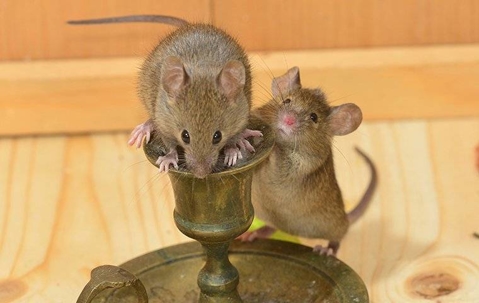As adorable as mice are in our favorite Disney cartoons, these little gray guys cause damage far beyond their size in real life.
Mice chew up the electrical wiring in houses and are the 3rd most common cause of house fires. They gnaw on walls, furniture, and books to keep their teeth short and contaminate and destroy your food.
Mice spread multiple serious and easily transferable diseases, such as:
- Leptospirosis
- Lymphocytic choriomeningitis (LCM)
- Tularemia
- Salmonellosis
Recently, tests have shown a connection between exposure to mice feces and asthma.
Let's take a closer look at what types of mice you might encounter in your Conroe home, what keeps mice away, how to deal with mice infestation if prevention methods fail, and if the DIY approach doesn't work out; how to find high-quality pest control in Conroe.
Types Of Rodents That Often invade Conroe Homes
Thanks to the size of the ecosystem that our great state of Texas sports, you can come across dozens of species of mice within its borders, but as for Conroe rodents, you're likely to run into either house mice or deer mice.
- House mice grow from 2 1/2 to 3 3/4 inches in length, not counting the tail, and are usually grey with cream-colored undersides. They have short, round bodies and large ears. House mice are a non-native species, but you can find them throughout the whole state.
- Deer Mice are most common in outdoor areas. These mice can grow up to 8 inches long, including the tail, have a stockier shape than house mice, and are most often brown with white feet and undersides.
All mice are social creatures and experts at staying out of sight, so if you've spotted a mouse in your house, there is most likely a nest and a colony nearby.
Five Tips For Effective House Mouse Prevention
It's a lot easier to prevent mice from getting into your Conroe house than get them to leave once they're in, so let's take a look at a couple of prevention strategies:
- Seal any cracks in the outside walls larger than a nickel.
- Keep food in sealed containers to avoid attracting mice.
- Cut vegetation and tree branches away from the house.
- Get rid of clutter to take away places mice can hide and nest.
- Keep an eye on rarely used spaces like basements, attics, cars, and RVs.
Mice are coming into your house for two simple reasons; food and shelter. If you remove the temptation of easily accessible food and make shelter harder to get, they just might think twice about heading your way.
Natural Prevention Tips For House Mice
If you're in the mood to add a bit of firepower to your prevention approach, here are a few natural mice repellents to make your place even less attractive to these little disease spreaders:
- Peppermint Oil: Mice hate the smell, so soak a few cotton balls or pray around areas you suspect mice travel through.
- Cayenne pepper: Dust the area to deter mice.
- Onion and garlic: Mice hate the smell, so leave pieces where mice travel.
- White vinegar: Spay it around the outside walls.
- Steel wool: Toss it into any holes they might be coming in through.
Prevention is a great first step, but sometimes it just doesn't do the trick. If you're seeing signs of a mouse infestation in your Conroe home, it's time to get a professional involved!
How Exterminators Get Rid Of Mice
A well-trained Conroe rodent control professional will evaluate the extent of the infestation you're dealing with and develop a plan to rid your house of mice using either poisons or traps.
If you're dealing with a mouse problem, give Chase Pest & Termite Control a call today to get started and to learn more about our residential and commercial pest control services in Conroe.

